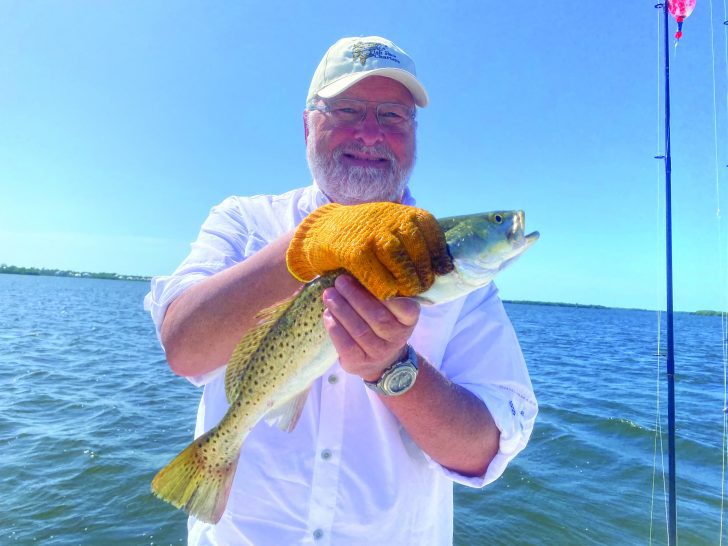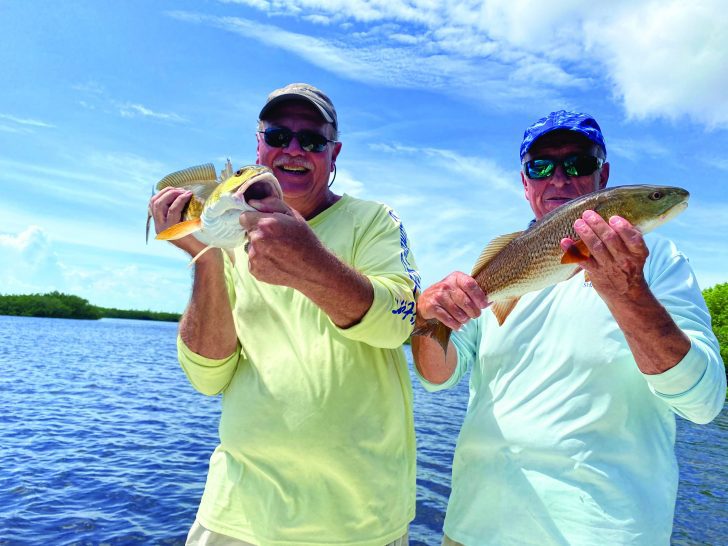November is definitely a ‘transitional’ month for most any of the Florida waters when it comes to inshore and offshore fishing. The temperatures are coming down with the advent of cold fronts from the north, east and west. Reef species move to shallower water, including inshore. Nonetheless, all species remain active and in good numbers with more migratory species arriving daily. I had great success in Key West fishing for Mahi Mahi (Dorado) throughout the months of July and August and my friend, Captain Jay Rodriquez had enjoyed catching lots of Dorado and Black Fin Tuna off of Marathon during the same time frame. Since the dolphin run was late, I decided to make one last trip to Key West with my good friend and client, Ron Defreitas from Alva for the ‘last haul’ of 2020. We caught a few fish, but nothing like before. Unfortunately, the ‘dew was off the lily’! Fewer schools of fish and rougher weather. The Wahoo bite had gotten better, but we were not geared to that venue.


I OFFER THE FOLLOWING STRATEGIES FOR CATCHING REDFISH
1) Fish the top half of the incoming and outgoing tides around the points of spoil islands and oyster beds. Fish close to and under the mangroves.
2) Be very quiet when moving in on a ‘spot’ you choose to fish, as the bigger redfish spook easily (they did not get big by being lucky). Change locations after 15 minutes or so, if they are not biting odds are they are not there.
3) Fish when the wind direction is coming from the south, such as southeast, south or southwest; the water levels will be higher and offer redfish access to areas that hold more bait for eating and more cover for protection.
4) Do not hesitate to re-visit previous ‘spots’ at different stages of the incoming or outgoing tides; the fish will move with the tides in search of baits and deeper waters when possible.
5) Although there are a number of artificial presentations that work (gold spoons and soft plastics), I like to use a live shrimp on a weighted jig head under a popping cork suspended above the seabed or a shrimp on a weighed jig head placed on the seabed. All presentations need to be close to the mangroves or structure (and stay there) for best results.
6) There are a number of other live offerings or cut baits as well. Cut or whole pinfish, cut ladyfish, finger mullet or pilchards. My clients and I find that shrimp are very consistent and prefer those for the most part, as they are easy to purchase and better yet, they work!
7) Do not arrive to fish the mangroves too late during a moon phase resulting in higher water levels and stronger tides that will allow the fish to move deep into the mangroves, otherwise they will be hard to coerce out to the presentations. Conversely, do not arrive too early on the incoming tide or too late on the outgoing tide when the water levels are not sufficient to hold the fish in and around the mangroves.
TIP OF THE DAY: A PRESENTATION OF MORE THAN 6 FEET FROM WHERE THEY ARE (UNLESS THEY ARE ON THE MOVE) MAY BE TOO FAR TO GENERATE A STRIKE!
